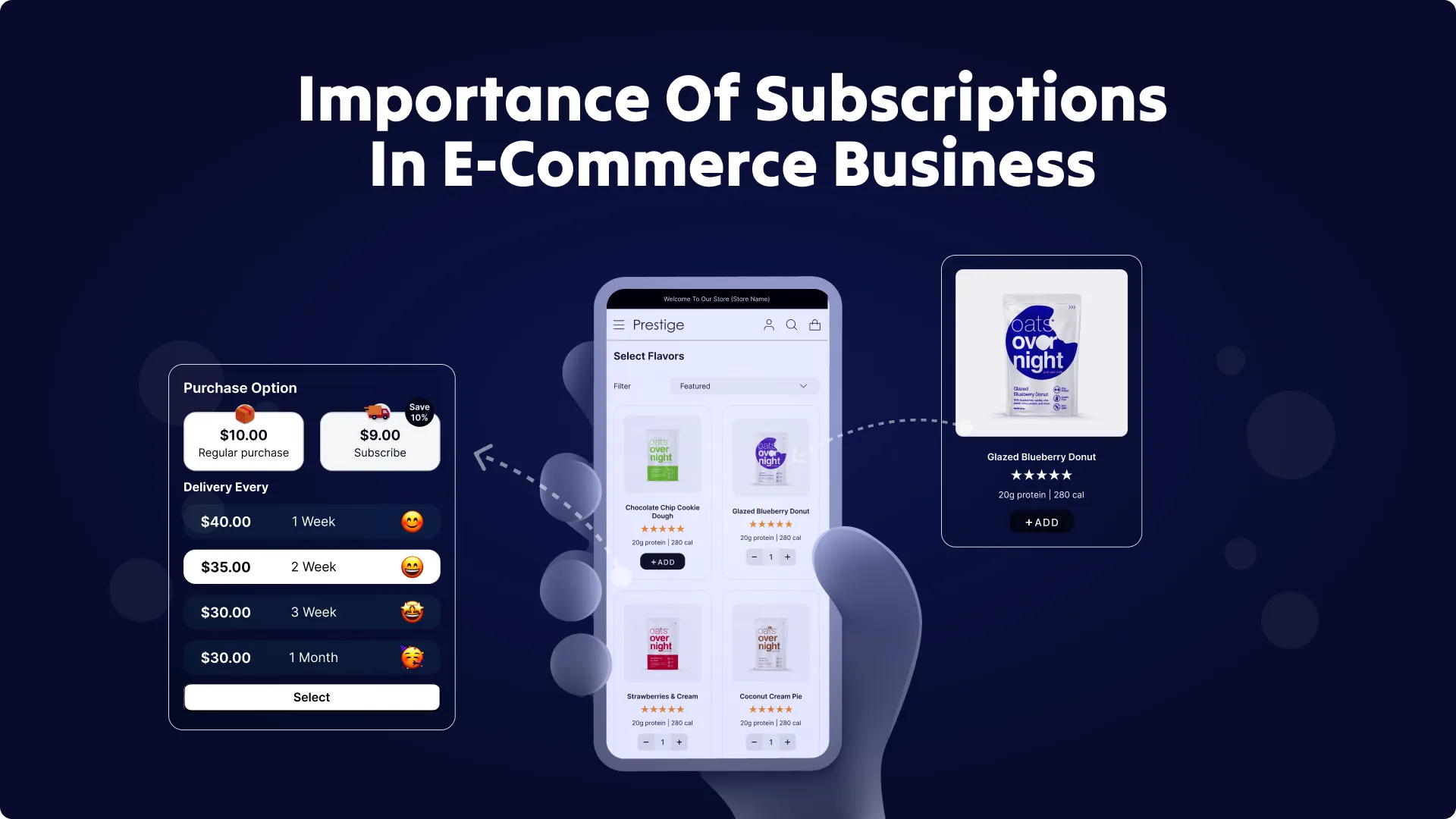
Importance of Subscriptions in E-commerce Business
Published On: February 13, 2025 - 5 min read
E-commerce is growing fast, and businesses are always looking for ways to keep customers returning. One of the best ways to do this is through a subscription-based model. Subscriptions make shopping easy and predictable for customers while ensuring a steady revenue stream for businesses.
Consumer behavior is changing, and subscription models are becoming a key part of successful e-commerce businesses. Studies show that the global subscription e-commerce market is expected to reach $904.2 billion by 2026. But why are they so popular? Let’s explore the benefits and how they can transform an online store.
What is a Subscription Model in E-commerce?
At its core, a subscription model in e-commerce is a business strategy where customers pay a recurring fee for a product or service. This can be in the form of a weekly, monthly, or annual subscription. The idea is to create a predictable and repeatable source of revenue while also providing consistent value to your customers.
Some common types of subscription models include:
- Curated Boxes: Think of monthly beauty boxes like Birchbox or clothing subscriptions such as Stitch Fix, where customers receive handpicked items based on their preferences.
- Replenishment Models: This is where customers subscribe to receive products they regularly use, such as toiletries or pet food.
- Access Subscriptions: These allow customers to access exclusive content or services, like streaming platforms (Netflix, Spotify) or premium memberships.
Many successful brands have incorporated subscriptions into their business models. For example, companies like Dollar Shave Club or Blue Apron have built multi-million dollar businesses around subscription-based offerings.
Benefits of Subscription Models for E-commerce Businesses
A) Predictable and Recurring Revenue
One of the most significant advantages of a subscription model is the stability it brings to cash flow. With recurring payments, you can easily forecast revenue and plan future investments. This reduces the unpredictability that often comes with one-time purchases and helps smooth out revenue fluctuations. Subscriptions are a powerful tool for scaling an eCommerce business efficiently.
B) Enhanced Customer Retention and Loyalty
Subscriptions foster long-term relationships with your customers. Instead of relying on new customers every month, a subscription model encourages repeat business. When customers sign up for regular deliveries, they tend to stick around longer, especially if you offer value, exclusivity, and convenience.
C) Improved Customer Experience
The subscription model gives customers convenience and personalization. With automated deliveries, customers don’t have to worry about remembering to reorder products. Plus, many businesses use data from customer preferences to personalize the shopping experience, which makes customers feel valued and special.
D) Increased Customer Lifetime Value (CLV)
A well-implemented subscription model increases customer lifetime value (CLV). With recurring purchases, you’re not only building a steady revenue stream but also creating opportunities for upselling and cross-selling. Offering additional items or upgraded products as part of the subscription can drive even more sales.
E) Better Inventory and Demand Planning
Subscriptions allow you to plan your inventory better. By knowing how many customers will be ordering products in the coming weeks or months, you can predict demand more accurately. This reduces the risk of overstocking or running out of stock, which can be detrimental to revenue and customer satisfaction.
Benefits for Consumers
Subscriptions offer numerous advantages for customers. First and foremost, they save time. Instead of having to reorder products, customers can receive their items regularly, making the process more convenient. Additionally, many subscription models offer discounts for recurring orders, which can lead to cost savings.
Moreover, the personalized experiences provided by these models make shopping easier for consumers. For instance, the Shopify Subscription app allows e-commerce businesses to customize their offerings based on customer preferences, leading to a more tailored shopping experience.<?p>
Key Metrics to Track for a Successful Subscription Business
To ensure the success of your subscription model, it’s essential to track the right metrics.
-
- Monthly Recurring Revenue (MRR): This metric shows how much predictable revenue your business generates each month through subscriptions.
- Churn Rate: The proportion of subscribers who discontinue their subscriptions. Keeping churn low is key to maintaining a successful eCommerce business.
- Customer Acquisition Cost (CAC): How much does it cost to acquire a new subscriber? If your CAC is too high, it could hurt your profitability.
- Customer Lifetime Value (CLV): Customer Lifetime Value (CLV) represents the total revenue a customer generates throughout their relationship with your business. Increasing CLV is a primary goal in any subscription business.
How to Set Up a Subscription Model for Your E-commerce Store
Setting up a subscription model for your eCommerce business requires careful planning and the right tools. You can follow these steps:
-
-
- Choosing the Right Subscription Strategy: Decide which subscription model works best for your products and customers.
- Integrating Subscription Apps: You’ll need a reliable tool to manage your subscriptions. A Shopify subscription app like Easy Subscriptions can seamlessly integrate with your Shopify store and handle everything from billing to customer management.
- Marketing and Customer Engagement Tips: Promote your subscription models through email campaigns, social media, and targeted ads. Engage customers with personalized offers to encourage sign-ups.
-
Common Challenges in Subscription E-commerce and How to Overcome Them
While subscription models offer many benefits, there are also challenges to consider:
-
-
- Churn Management: Losing subscribers can hurt your business. Address this by offering incentives, improving your product, or providing excellent customer support to keep customers engaged.
- Ensuring Product Variety and Freshness: Customers expect variety and novelty in their subscriptions. Constantly updating your offerings will keep things fresh and exciting.
- Addressing Subscription Fatigue: If customers feel overwhelmed by too many subscriptions, they may cancel. Be mindful of how often you bill them and offer value to avoid subscription fatigue.
-
Conclusion
Subscriptions are quickly becoming one of the most powerful business models in the e-commerce world. From providing predictable and recurring revenue to fostering customer loyalty and offering improved customer experiences, the benefits for businesses and consumers are undeniable.
Ready to unlock the power of subscriptions? Start today with tools like the Easy Subscriptions app and elevate your eCommerce business to new heights!


















